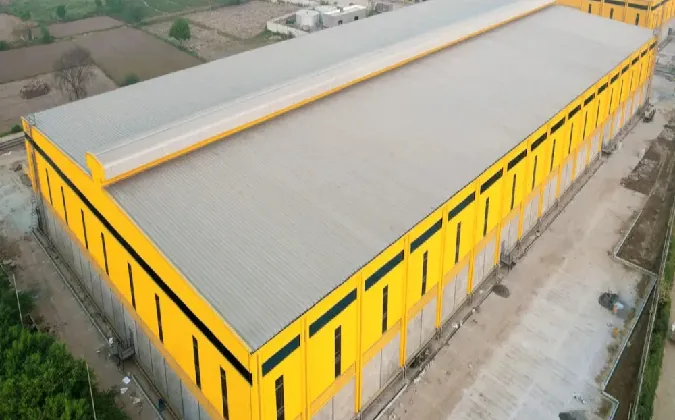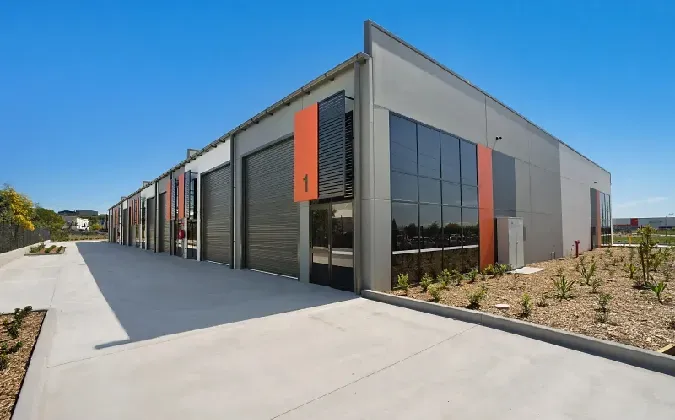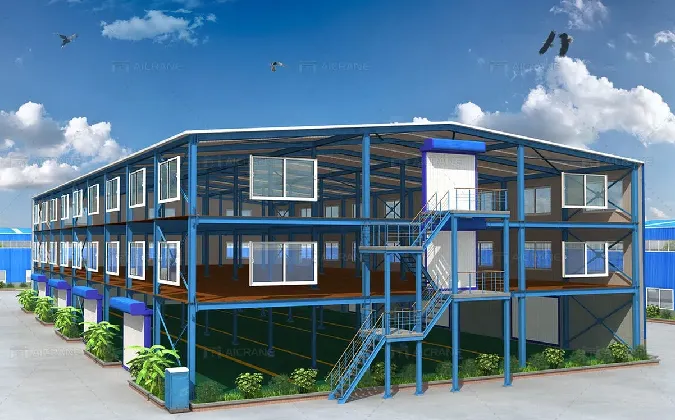- Afrikaans
- Albanian
- Amharic
- Arabic
- Armenian
- Azerbaijani
- Basque
- Belarusian
- Bengali
- Bosnian
- Bulgarian
- Catalan
- Cebuano
- Corsican
- Croatian
- Czech
- Danish
- Dutch
- English
- Esperanto
- Estonian
- Finnish
- French
- Frisian
- Galician
- Georgian
- German
- Greek
- Gujarati
- Haitian Creole
- hausa
- hawaiian
- Hebrew
- Hindi
- Miao
- Hungarian
- Icelandic
- igbo
- Indonesian
- irish
- Italian
- Japanese
- Javanese
- Kannada
- kazakh
- Khmer
- Rwandese
- Korean
- Kurdish
- Kyrgyz
- Lao
- Latin
- Latvian
- Lithuanian
- Luxembourgish
- Macedonian
- Malgashi
- Malay
- Malayalam
- Maltese
- Maori
- Marathi
- Mongolian
- Myanmar
- Nepali
- Norwegian
- Norwegian
- Occitan
- Pashto
- Persian
- Polish
- Portuguese
- Punjabi
- Romanian
- Russian
- Samoan
- Scottish Gaelic
- Serbian
- Sesotho
- Shona
- Sindhi
- Sinhala
- Slovak
- Slovenian
- Somali
- Spanish
- Sundanese
- Swahili
- Swedish
- Tagalog
- Tajik
- Tamil
- Tatar
- Telugu
- Thai
- Turkish
- Turkmen
- Ukrainian
- Urdu
- Uighur
- Uzbek
- Vietnamese
- Welsh
- Bantu
- Yiddish
- Yoruba
- Zulu
aug . 21, 2025 20:40 Back to list
Understanding Advanced Industrial Shed Design for Modern Enterprises
In today’s rapidly evolving industrial landscape, the strategic importance of well-conceived industrial shed design cannot be overstated. These structures are more than mere shelters; they are pivotal assets that significantly impact operational efficiency, safety, and long-term profitability. A cutting-edge design integrates advanced materials, innovative engineering principles, and sustainable practices to create resilient, adaptable, and cost-effective spaces. From heavy manufacturing plants to intricate logistical hubs, the fundamental principles of design must coalesce with specific industry demands, ensuring optimal functionality and future scalability.
Modern industrial shed design focuses on maximizing usable space, enhancing structural integrity, and optimizing energy consumption. Key considerations include the choice of structural systems—such as portal frames, lattice girders, or space trusses—and the selection of cladding materials, which range from insulated sandwich panels for thermal efficiency to durable metal sheets for harsh environments. Furthermore, the integration of smart building technologies, such as automated climate control and energy management systems, is becoming standard, transforming traditional sheds into intelligent, high-performance facilities.
Current Trends in Industrial Shed Design and Construction
- Sustainable Building Practices: Growing emphasis on green building materials, energy-efficient designs, and renewable energy integration (e.g., solar panels on roofs). This includes optimizing natural light and ventilation to reduce reliance on artificial systems.
- Modular and Prefabricated Construction: The increasing popularity of prefabricated components and modular construction reduces on-site construction time, minimizes waste, and ensures higher quality control in a factory setting. This approach significantly speeds up project delivery for industrial sheds.
- Smart Building Technologies: Integration of IoT sensors, data analytics, and automation systems for predictive maintenance, energy optimization, and enhanced security. This allows for real-time monitoring of various operational parameters.
- Resilience and Adaptability: Designs that account for future expansion, re-purposing, and resistance to extreme weather events or seismic activity. Flexibility in internal layout is crucial for accommodating changing production lines or storage needs.
- Biophilic Design Elements: While less common in heavy industrial settings, there is a subtle trend towards incorporating natural elements or views to improve occupant well-being in administrative or common areas within large industrial sheds.
Technical Parameters and Structural Integrity in Industrial Shed Design
The structural integrity and long-term performance of any industrial shed design are directly tied to meticulously calculated technical parameters and the judicious selection of materials. Steel, predominantly hot-rolled sections and cold-formed sections, serves as the backbone for most industrial structures due to its high strength-to-weight ratio, ductility, and recyclability. Common steel grades include ASTM A36, A572 Grade 50, or European equivalents like S275 and S355, chosen based on load requirements and environmental conditions.
Load-bearing capacity is a critical design parameter. This encompasses dead loads (weight of the structure itself), live loads (occupants, equipment, stored materials), wind loads (calculated based on location, terrain, and building height), snow loads (relevant for colder climates), and seismic loads (for earthquake-prone regions). Engineers utilize structural analysis software like SAP2000, ETABS, or Staad.Pro to model stress distributions, deflections, and optimize member sizes according to international building codes (e.g., IBC, Eurocode).
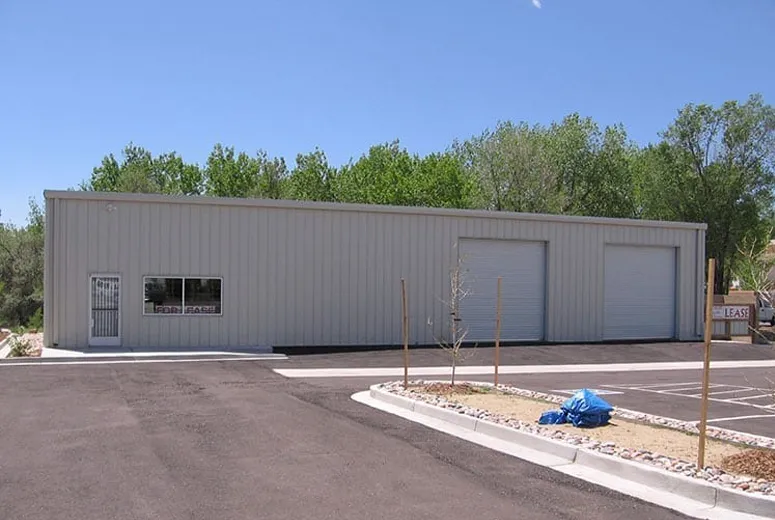
Corrosion protection is another vital aspect, especially for industrial sheds exposed to harsh industrial environments or coastal areas. This is typically achieved through galvanization (hot-dip or electro-galvanizing), which applies a protective zinc coating, or various paint systems such as epoxy primers and polyurethane topcoats. The coating system's choice depends on the corrosivity category of the environment, as defined by standards like ISO 12944. Furthermore, fire resistance, particularly for structures housing flammable materials or critical operations, is addressed through passive fire protection measures like intumescent paints, fire-rated boards, or spray-applied fireproofing, adhering to standards such as ASTM E119 or EN 13501.
Ventilation and natural lighting are passive design elements crucial for reducing operational costs and improving occupant comfort. Louvers, ridge vents, and large window openings or translucent roof panels are incorporated to facilitate air circulation and maximize daylight penetration, reducing the need for artificial lighting and mechanical ventilation systems. The U-value (thermal transmittance) of wall and roof cladding is considered to minimize heat transfer, contributing to energy efficiency and maintaining stable internal temperatures.
Key Technical Parameters for Industrial Sheds
| Parameter | Description | Typical Range/Standard |
|---|---|---|
| Steel Grade | Minimum yield strength for structural steel. | ASTM A36 (250 MPa), A572 Gr.50 (345 MPa), S355 (355 MPa) |
| Corrosion Protection | Coating system for environmental exposure. | Hot-dip Galvanization (610 g/m²), ISO 12944 Paint Systems (C3-C5M) |
| Fire Resistance Rating | Duration structural elements can withstand fire. | 30 min, 60 min, 90 min, 120 min (e.g., ASTM E119, EN 13501-2) |
| Roof Cladding U-Value | Thermal transmittance of roof material. | 0.2 – 0.5 W/(m²·K) for insulated panels |
| Wind Load Design | Pressure/suction forces from wind. | Up to 0.7-1.5 kPa (dependent on location/height, ASCE 7, Eurocode 1) |
| Design Life | Expected functional lifespan of the structure. | 50 – 100 years for primary structure |
The Comprehensive Process of Industrial Shed Fabrication
The journey from conceptual industrial shed design to a fully operational structure involves a highly coordinated and precise industrial shed fabrication process. This systematic approach ensures that every component meets rigorous quality standards and contributes to the overall structural integrity and longevity of the facility.
Detailed Fabrication Process Flow:
-
Design and Engineering (Pre-Fabrication):
- Conceptual Design: Based on client requirements, site conditions, and functional needs.
- Structural Analysis: Detailed calculations for loads (dead, live, wind, seismic), member sizing, and connection design using software like Tekla Structures or SDS/2.
- Detailing and Shop Drawings: Creation of precise fabrication drawings (assembly drawings, single part drawings) and erection drawings. This includes Bill of Materials (BOM) generation.
- Material Selection: Specifying steel grades (e.g., Q235, Q345, ASTM A36/A572), cladding materials (e.g., galvanized steel, insulated panels), and connection elements (bolts, welds).
-
Material Procurement:
- Sourcing raw steel plates, sections, pipes, and other materials from certified suppliers, ensuring compliance with specified standards (e.g., ASTM, EN, ISO).
- Material Test Certificates (MTCs) are verified to confirm chemical composition and mechanical properties.
-
Cutting and Shaping:
- CNC Plasma/Flame Cutting: Automated machines cut steel plates and sections to precise dimensions based on shop drawings. This ensures high accuracy and minimal material waste.
- Punching/Drilling: Holes for bolted connections are created using CNC punching machines or automated drilling lines.
- Bending/Forming: Plate bending machines or press brakes are used to form structural components like cold-formed purlins, girts, or special profiles.
-
Assembly and Welding:
- Component Assembly: Individual cut and drilled pieces are assembled into larger sub-assemblies (e.g., columns, beams, trusses) using jigs and fixtures to maintain dimensional accuracy.
- Welding: Qualified welders perform welding operations (e.g., SMAW, SAW, GMAW, FCAW) according to Welding Procedure Specifications (WPS) and qualified by Procedure Qualification Records (PQR).
- Straightening: Post-welding, any distortions caused by heat are corrected using mechanical or thermal methods.
-
Surface Preparation and Coating:
- Shot Blasting/Sand Blasting: Surfaces are cleaned to remove rust, mill scale, and contaminants, preparing them for coating (typically to SA 2.5 or SA 3.0 standards). This enhances coating adhesion and durability.
- Painting/Galvanizing: Application of specified protective coatings. This may include primer, intermediate, and topcoats, or hot-dip galvanizing for superior corrosion resistance as per ISO 1461.
-
Quality Control and Inspection:
- Dimensional Inspection: Checking critical dimensions, hole locations, and camber/sweep tolerances using calibrated instruments.
- Visual Weld Inspection: Ensuring welds are free from defects like cracks, porosity, or undercut.
- Non-Destructive Testing (NDT): Methods such as Ultrasonic Testing (UT), Magnetic Particle Testing (MPT), Radiographic Testing (RT), or Dye Penetrant Testing (DPT) are used to detect internal or surface flaws in critical welds, conforming to standards like ASTM E164 or ISO 17640.
- Coating Thickness Measurement: Verifying the applied paint or zinc coating thickness using gauges.
- Final Inspection: Comprehensive check against design specifications and shop drawings before dispatch.
-
Marking, Packing, and Dispatch:
- Each fabricated component is marked with a unique identification number for easy on-site erection.
- Components are carefully packed to prevent damage during transit, often bundled and protected.
- Logistics arranged for timely delivery to the construction site.
The robust nature of these processes ensures that the resulting industrial sheds are not only structurally sound but also adhere to stringent quality and safety protocols. The emphasis on precision engineering, certified materials, and comprehensive quality checks minimizes on-site issues and extends the operational life of the structure, often exceeding 50 years under proper maintenance.
Applications and Advantages of Customizable Prefab Metal Workshops
Our Customizable Prefab Metal Workshops are a direct embodiment of advanced industrial shed design principles, offering unparalleled versatility and efficiency for a diverse range of industries. These prefabricated structures leverage the strengths of steel fabrication to deliver solutions that are not only robust but also highly adaptable to specific operational needs.
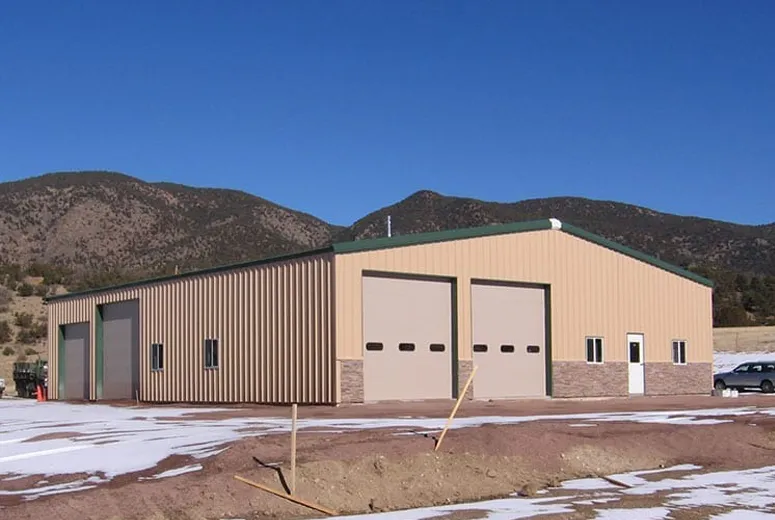
Typical Application Scenarios:
- Manufacturing and Production Facilities: Ideal for housing heavy machinery, assembly lines, and specialized production processes. The open span capabilities of steel structures allow for flexible internal layouts.
- Warehousing and Logistics Centers: Providing vast, column-free spaces essential for efficient storage, material handling, and distribution operations. High clear heights accommodate automated racking systems.
- Automotive Workshops and Repair Bays: Durable and spacious structures suitable for vehicle maintenance, bodywork, and painting. Easy integration of overhead cranes and vehicle lifts.
- Agricultural Buildings: Storage for equipment, grain, or livestock shelters, designed to withstand rural environmental conditions.
- Energy Sector: Housing power generation equipment, substations, or renewable energy components. Designed for durability in often remote or challenging locations.
- Petrochemical and Chemical Industries: Specialized industrial sheds designed with enhanced corrosion resistance and often explosion-proof features, accommodating the unique safety requirements of these sectors.
- Metallurgy and Heavy Industry: Robust structures capable of withstanding extreme temperatures and heavy loads, often incorporating robust ventilation and dust extraction systems.
- Water Supply and Drainage Facilities: Enclosures for pumping stations, treatment plants, or equipment storage, requiring resistance to moisture and sometimes corrosive chemicals. Our designs ensure long service life in these demanding environments.
Technical Advantages and Performance Benefits:
- Speed of Construction: Prefabricated components are manufactured off-site in a controlled environment, reducing construction time by up to 50% compared to traditional methods. This translates to faster project completion and quicker ROI.
- Cost-Effectiveness: Reduced labor costs, minimal on-site waste, and predictable material expenses contribute to overall cost savings. The efficiency of industrial shed fabrication also minimizes contingency costs.
- Superior Durability and Longevity: High-grade steel components, protected by advanced anti-corrosion treatments like hot-dip galvanization or multi-layer paint systems, ensure a design life of 50 years or more. They are highly resistant to pests, rot, and mold.
- Enhanced Structural Integrity: Engineered to withstand harsh environmental conditions, including high winds (up to 200 mph), heavy snow loads (up to 100 psf), and seismic activity (Zone 4 standards). This ensures operational continuity and safety.
- Energy Efficiency: Option for insulated sandwich panels (e.g., EPS, PU, Rockwool core) for walls and roofs dramatically improves thermal performance, reducing heating and cooling costs by up to 30-40%. Integration of natural ventilation and daylighting solutions further enhances energy savings.
- Corrosion Resistance: Specialized coatings and material choices provide exceptional protection against chemical exposure, saltwater environments, and industrial pollutants, crucial for applications in petrochemical or marine industries.
- Customization and Flexibility: Designs can be tailored to exact specifications, including clear span requirements, bay spacing, eave heights, roof pitches, and integration of specific features like overhead crane runways (up to 100-ton capacity), mezzanines, specialized ventilation, and access points.
- Sustainability: Steel is 100% recyclable, and prefabricated construction reduces on-site waste, contributing to a lower environmental footprint.
Our Customizable Prefab Metal Workshops exemplify how meticulous industrial shed design translates into tangible benefits, offering robust, efficient, and future-proof solutions for diverse industrial requirements.
Selecting Your Partner: Manufacturer Comparison and Custom Solutions
Choosing the right partner for your industrial shed design and construction project is paramount to its success. While many manufacturers offer prefabricated metal buildings, critical differentiators emerge when considering factors beyond just initial cost. A thorough evaluation involves looking at technical expertise, certification, track record, and the breadth of customization options available.
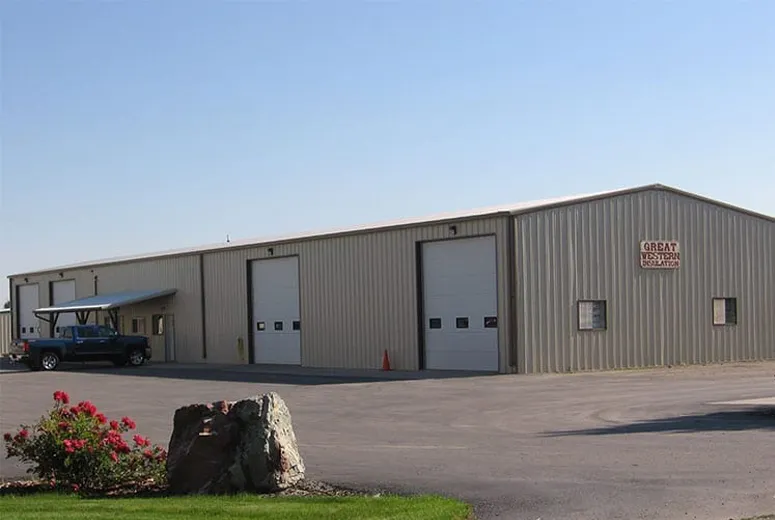
Key Criteria for Manufacturer Comparison:
- Engineering Capability and Design Software: Evaluate their in-house engineering team's proficiency and the advanced software (e.g., BIM tools, structural analysis suites) they utilize for accurate and optimized industrial shed design. This directly impacts the structural integrity and cost-efficiency.
- Quality Control and Certifications: Look for ISO 9001 certification for quality management, AISC (American Institute of Steel Construction) certification for steel fabricators, or CE marking for European markets. These signify adherence to stringent quality and safety standards throughout the industrial shed fabrication process.
- Material Sourcing and Traceability: A reputable manufacturer will provide full traceability of materials, ensuring they come from certified mills and meet specified ASTM or EN standards. This guarantees the quality of raw materials used in your industrial sheds.
- Experience and Track Record: Review their portfolio of completed projects, especially in your specific industry. Longevity in the market (e.g., 20+ years of operation) and positive client testimonials demonstrate proven reliability.
- Customization Flexibility: Can they accommodate unique spans, eave heights, specialized crane systems, multi-story sections, or specific facade requirements? A truly customizable solution is crucial for specific operational needs.
- Project Management and Support: Assess their project management approach, communication protocols, and post-sales support, including installation guidance, warranty provisions, and spare parts availability.
- Compliance with Local Codes: Ensure they have experience and capability to design and fabricate structures that comply with local building codes, wind zones, seismic regulations, and environmental standards of your project location.
Tailored Customization Solutions:
Our approach to industrial shed design revolves around delivering fully customized solutions, ensuring that every structure is perfectly aligned with your operational demands and future growth. We offer extensive customization in:
- Structural Configuration: Tailoring clear span requirements (up to 60 meters without internal columns), eave heights (from 6m to 20m+), and bay spacing to optimize internal layouts for machinery, storage, or workflows. This flexibility is key to maximizing efficiency.
- Cladding Systems: A wide selection of wall and roof cladding options, including single-skin metal sheets, insulated sandwich panels (PU, EPS, Rockwool) for thermal performance, and specialized panels for acoustics or fire rating. Color and texture options are also available.
- Integrated Systems: Seamless integration of crucial industrial infrastructure such as overhead crane systems (single or double girder, up to 100-ton capacity), specialized ventilation systems (e.g., forced air, natural ridge vents, exhaust fans), smoke and heat extraction systems, and integrated utility services (electrical conduits, plumbing channels).
- Fenestration and Access: Custom placement and sizing of windows, skylights, ridge lights for natural illumination, and various types of doors (rolling doors, sliding doors, pedestrian doors) to facilitate efficient movement of personnel and goods.
- Environmental Adaptations: Design modifications for extreme climates, including heavy snow loads, high wind zones, corrosive atmospheres, or seismic activity, ensuring the structure’s resilience and long-term stability. This includes specialized coatings and structural reinforcements.
- Architectural Features: Incorporating aesthetic elements like specific facade treatments, corporate branding elements, or office annexes to create a functional yet visually appealing facility.
Our commitment to comprehensive customization, backed by robust engineering and stringent quality control, distinguishes us as a preferred partner for complex industrial shed design projects. We aim to deliver a solution that not only meets your current needs but also anticipates future expansion and evolving operational demands.
Case Studies and Real-World Applications of Industrial Sheds
The practical application of well-executed industrial shed design is best illustrated through real-world examples. These case studies highlight how tailored solutions address specific industry challenges and deliver measurable operational benefits. While specific client names cannot be disclosed due to confidentiality, these examples represent typical scenarios our Customizable Prefab Metal Workshops address.
Case Study 1: Large-Scale Manufacturing Plant
- Challenge: A global automotive component manufacturer required a new production facility with a vast, column-free internal space to accommodate large machinery and an automated assembly line, along with integrated heavy lifting capabilities. The timeline for construction was extremely tight.
- Solution: We provided a bespoke industrial shed design featuring a 50-meter clear span portal frame structure, with an eave height of 15 meters to support two 40-ton overhead EOT cranes. Insulated sandwich panels with a 100mm PU core were used for walls and roof to maintain stable internal temperatures for sensitive equipment. The entire industrial shed fabrication and erection phase was completed in 8 months, significantly faster than conventional construction.
- Outcome: The client achieved full operational capacity three months ahead of schedule, translating into substantial early revenue generation. The energy-efficient design resulted in annual savings of approximately 25% on HVAC costs, while the robust structure ensured minimal maintenance requirements over its initial years of operation.
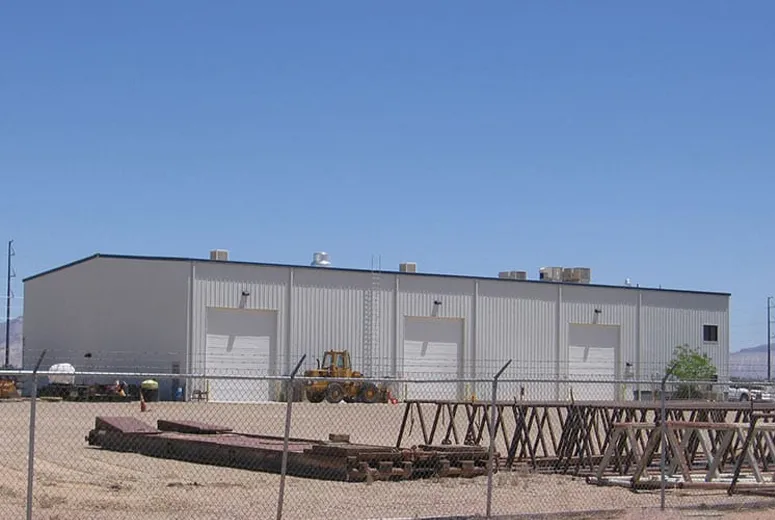
Case Study 2: Logistics and Distribution Hub in a Coastal Region
- Challenge: A major logistics firm needed a new distribution center in a high-wind, corrosive coastal environment. The design had to accommodate high racking systems and provide multiple loading docks while resisting saltwater corrosion effectively.
- Solution: Our industrial shed design for this project incorporated a heavy-duty steel frame with all primary structural members hot-dip galvanized for maximum corrosion protection (C5M rating as per ISO 12944). The structure was engineered to withstand Category 3 hurricane-force winds (up to 120 mph). Specialized insulated wall panels provided additional thermal and sound insulation. Strategic placement of 20 high-speed rolling doors facilitated rapid throughput.
- Outcome: The facility has demonstrated exceptional resilience against severe weather events. The robust anti-corrosion treatment has ensured minimal degradation, even after years of exposure to salty air. The optimized layout and quick access points have significantly improved logistics efficiency, reducing truck turnaround times by 15%.
Case Study 3: Chemical Storage and Mixing Facility
- Challenge: A chemical company required a facility for storing and mixing various industrial chemicals. The primary concerns were strict ventilation requirements, fire safety, and chemical spill containment, in addition to corrosion from chemical vapors.
- Solution: We developed a specialized industrial shed design with a dedicated section for chemical mixing, featuring enhanced ventilation systems (multiple roof ventilators and low-level louvers for cross-flow), and internal wall cladding resistant to chemical attack. The structure was designed with fire-rated partitions (2-hour rating) and explosion-venting panels. Steel components in corrosive zones received specialized epoxy and urethane coatings resistant to specific chemical vapors.
- Outcome: The facility successfully passed all regulatory safety inspections, providing a secure environment for chemical operations. The advanced ventilation system effectively manages airborne contaminants, ensuring worker safety and compliance with environmental regulations. The corrosion-resistant finishes have maintained structural integrity despite continuous exposure to challenging chemical agents.
These case studies underscore our capability in delivering high-performance industrial sheds that are not only structurally sound but also precisely engineered to meet the nuanced demands of various industries, ensuring safety, efficiency, and long-term value.
Ensuring Trust and Authority: Our Commitment to Quality and Support
In the B2B sector, trust and authority are built on a foundation of proven expertise, transparent processes, and unwavering support. Our commitment to excellence in industrial shed design and industrial shed fabrication is underpinned by rigorous quality standards, industry certifications, and a comprehensive customer support framework.
Certifications and Quality Assurance:
- ISO 9001:2015 Certified: Our quality management system adheres to international standards, ensuring consistent quality across all stages of design, fabrication, and delivery. This certification reflects our dedication to continuous improvement and customer satisfaction.
- Compliance with International Building Codes: All our industrial sheds are designed and fabricated in strict compliance with relevant international building codes and standards, including IBC (International Building Code), AISC (American Institute of Steel Construction), BS EN (British Standards European Norms), and local regulations specific to project locations.
- Material Traceability: We maintain full traceability of all raw materials from certified mills, providing Material Test Certificates (MTCs) to verify chemical composition and mechanical properties of steel, ensuring structural integrity.
- In-house Testing and Inspection: Our fabrication facilities incorporate a multi-stage quality control process, including NDT (Non-Destructive Testing) for welds (UT, MPT), dimensional accuracy checks, and coating thickness measurements, all performed by certified personnel.
Delivery and Warranty Commitment:
- Predictable Delivery Cycles: Leveraging our standardized yet customizable prefab processes, we provide clear, reliable delivery schedules. Typical industrial shed fabrication and delivery (ex-works) ranges from 8-16 weeks, depending on complexity and size, significantly reducing project timelines compared to traditional construction.
- Comprehensive Warranty: We offer a robust warranty on all structural components, typically covering 10-25 years against manufacturing defects and structural failure, and a separate warranty for cladding materials and finishes, ranging from 5-15 years depending on the chosen system and environment. This provides long-term assurance for your investment.
Frequently Asked Questions (FAQ):
-
Q: What is the typical lifespan of your industrial sheds?
A: Designed for longevity, our industrial sheds have a structural design life of 50-100 years, depending on environmental conditions and maintenance. Our robust steel and coating systems ensure minimal degradation over decades. -
Q: Can your sheds be expanded or relocated in the future?
A: Yes, our modular industrial shed design allows for relatively easy expansion by adding bays or sections. While complete relocation is complex, it is technically feasible for certain designs due to their bolted connections. -
Q: What kind of foundation is required for your prefab metal workshops?
A: Typically, a reinforced concrete strip or isolated pad foundation is required, designed according to local soil conditions and the building's specific loads. We provide detailed foundation loading diagrams for local civil engineers to use. -
Q: Do you offer installation services, or is it supply-only?
A: While our primary service is comprehensive industrial shed fabrication and supply, we provide detailed erection drawings and technical support. We can also recommend experienced local erection teams or supervise the installation if required, offering flexibility based on client needs. -
Q: How do you ensure energy efficiency in your industrial shed design?
A: We utilize high-performance insulated sandwich panels for thermal envelopes, optimize for natural daylighting through skylights and translucent panels, and incorporate passive ventilation strategies (e.g., ridge vents, louvers) to reduce reliance on mechanical heating and cooling, leading to significant operational savings.
Our dedication to transparent practices, stringent quality control, and comprehensive post-sales support ensures that our clients receive not just a product, but a reliable, long-term partnership for their industrial infrastructure needs.
Conclusion and Outlook
The evolution of industrial shed design reflects a broader industrial shift towards efficiency, sustainability, and intelligent infrastructure. As global industries face increasing pressures to optimize operations, reduce environmental impact, and enhance worker safety, the demand for sophisticated, prefabricated metal workshops continues to grow. Our commitment to advanced engineering, meticulous industrial shed fabrication, and unparalleled customization positions us as a leading provider of these vital structures. We continuously integrate cutting-edge technologies and materials to ensure that our Customizable Prefab Metal Workshops not only meet but exceed the demanding requirements of modern enterprises. Investing in a thoughtfully designed and expertly fabricated industrial shed is an investment in the long-term operational success and resilience of your business.
References
- American Institute of Steel Construction (AISC). (2016). Specification for Structural Steel Buildings.
- International Code Council (ICC). (2018). International Building Code (IBC).
- European Committee for Standardization (CEN). (2005). EN 1993: Eurocode 3 - Design of steel structures.
- International Organization for Standardization (ISO). (2018). ISO 12944: Paints and varnishes — Corrosion protection of steel structures by protective paint systems.
- ASTM International. (2022). ASTM A36/A36M: Standard Specification for Carbon Structural Steel.
-
Steel Frame Factory with Insulated Roof Panels
NewsAug.14,2025
-
Prefab Metal Building with Insulation Package Options
NewsAug.14,2025
-
Industrial Steel Sheds for Temporary Workshop Use
NewsAug.14,2025
-
Metal Workshops Featuring Corrugated Steel Roofs
NewsAug.14,2025
-
Modular Steel Frame Excellence: Our Pursuit of Perfection
NewsAug.14,2025
-
Metal Garage Kits Crafted with Customer Satisfaction at Heart
NewsAug.14,2025
Products categories
Our Latest News
We have a professional design team and an excellent production and construction team.






